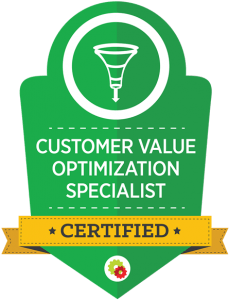Creating a Social Media Content Calendar That Drives Results
In the fast-paced world of social media, businesses need a well-organized content strategy to maintain a competitive edge. A social media content calendar is an essential tool for achieving this, as it allows brands to plan, track, and optimize their posts systematically. Beyond just a posting schedule, a robust content calendar includes strategic elements like content themes, audience insights, and timing. When created thoughtfully, a content calendar becomes the backbone of a results-driven social media strategy, helping brands stay consistent, relevant, and engaging.
What is a Social Media Content Calendar?
A social media content calendar is a document that organizes and schedules content across various social platforms. It provides a roadmap for upcoming posts, ensuring content aligns with marketing goals, events, and campaigns. Beyond offering a structure, a content calendar helps brands plan for key dates, manage resources effectively, and track engagement. A comprehensive calendar fosters consistency and creativity, both essential for building a loyal social media following.
How a Content Calendar Impacts Engagement
Ensuring Consistency and Quality
When brands post consistently, they stay top-of-mind with their audience, fostering familiarity and trust. A content calendar is essential for maintaining a steady stream of high-quality content, which is crucial for long-term engagement. It also reduces the need for last-minute content creation, allowing teams to focus on creating well-crafted, engaging posts.
Setting Goals for Your Content Calendar
Aligning Social Media with Business Goals
Setting clear, actionable goals for your social media content calendar ensures every post serves a purpose. For instance, if your goal is brand awareness, posts should focus on reach and visibility. For sales-oriented goals, however, content should be geared toward conversions and lead generation. When goals are defined, the content calendar can be structured to align with these objectives, ultimately driving measurable results.
Key Metrics to Focus On
Metrics like engagement rate, reach, and click-through rate are essential to track as they reflect the calendar’s effectiveness. While each platform may prioritize different metrics, engagement often indicates content relevance and audience interest, making it an important indicator for optimizing future posts.
Identifying Your Target Audience
Creating Content for Your Ideal Follower
Understanding your target audience is key to creating content that resonates. Develop audience personas based on demographics, interests, and behaviors. Knowing who your followers are helps tailor content to their preferences, which can dramatically increase engagement rates and drive results.
Audience Segmentation and Trends
Dividing your audience into segments allows you to cater to each group’s unique needs. By identifying trends, such as which topics or formats your audience prefers, you can create targeted content that engages specific groups effectively.
Choosing Content Themes and Pillars
Establishing a Consistent Brand Voice
Content themes, or pillars, provide a foundation for your calendar. Examples include informational posts, entertaining content, and promotional materials. Establishing these themes ensures that your brand voice remains consistent across all content, regardless of the platform.
Types of Content That Drive Engagement
Engaging content varies depending on the audience, but some types universally resonate: value-driven educational posts, inspirational messages, and entertaining visuals. Aim for a mix of content that informs, inspires, and engages your audience to keep them coming back.
Developing a Posting Schedule
How Often to Post on Each Platform
Each social media platform has unique algorithms and user behaviors that influence optimal posting frequency. For example, Instagram and Facebook may benefit from daily posts, while LinkedIn may require fewer updates. Understanding each platform’s dynamics can help you develop a posting schedule that maximizes visibility and engagement.
The Best Days and Times for Engagement
Posting at the right time is as important as posting the right content. Analyze engagement data to identify peak times for your audience, such as when they are most active on each platform. Many studies suggest that weekdays, particularly early mornings and evenings, tend to see higher engagement rates, but this varies by platform and audience.
Content Creation and Curation
Original Content vs. Curated Content
Both original and curated content play important roles in a balanced content calendar. Original content, like brand stories, product updates, and insights, drives direct engagement, while curated content allows you to share relevant information from industry sources. Mixing both types ensures variety and reinforces your brand’s authority.
Sourcing and Repurposing Content
Repurposing content, such as turning a blog post into a series of social media infographics, can maximize its lifespan and reach. By adapting content for various formats and platforms, you keep your feed fresh without constantly creating new material.
Organizing Content for a Balanced Calendar
Mixing Promotional, Informative, and Interactive Content
A well-rounded content calendar includes a mix of content types. While promotional posts highlight products and services, informative posts provide value, and interactive content encourages engagement. Balancing these three types ensures you’re meeting audience needs and marketing goals without overwhelming followers with sales messages.
Creating a Monthly Overview
At the start of each month, outline the main themes and goals for your social media strategy. A monthly overview can highlight key dates, events, and campaigns, making it easier to prepare relevant content in advance.
Selecting Tools for Content Calendar Management
Popular Tools for Social Media Planning
Several tools simplify content calendar creation and management. Hootsuite, Buffer, and Trello, for example, help plan, schedule, and monitor posts. These tools offer valuable features like content previews, analytics integration, and team collaboration, streamlining the entire social media management process.
Using Automation for Efficiency
Scheduling tools allow you to automate posts, saving time and ensuring consistent posting. Automation can handle routine tasks while allowing your team to focus on creating engaging content and interacting with followers in real time.
Collaborating with Your Social Media Team
Assigning Roles and Responsibilities
A content calendar requires coordinated effort, especially for larger teams. Clearly define roles for content creation, curation, and approval processes to avoid confusion and maintain quality control. A designated team member for each role, such as graphic design, copywriting, or analytics, ensures the calendar runs smoothly.
Content Review and Approval Process
An approval process prevents errors and ensures each post aligns with brand guidelines. Reviewing content before scheduling provides an opportunity to make final adjustments, enhancing quality and cohesion.
Incorporating Visual Content in the Calendar
Using Graphics, Videos, and Reels for Engagement
Visuals are essential for capturing attention and boosting engagement. By planning the types of visuals you’ll post—such as videos, infographics, or carousels—you can ensure a balanced and visually appealing feed. Be sure to include video content, as it often drives higher engagement.
Content Design and Brand Consistency
Visual branding, such as color schemes, typography, and logo placement, should be consistent across posts. When users see a familiar aesthetic, they instantly recognize your brand, making your content more memorable and engaging.
Using Hashtags Strategically
Researching and Integrating Relevant Hashtags
Hashtags help increase reach and attract new followers. Incorporate both popular and niche hashtags in your content calendar for maximum visibility. Research relevant hashtags for each campaign to ensure you’re reaching the right audience.
Branded Hashtags vs. Trending Hashtags
Branded hashtags promote specific campaigns or events, while trending hashtags increase exposure. Combining both types in your content calendar can help boost engagement and establish a unique brand presence.
Tracking and Analyzing Performance
Measuring the Impact of Your Content Calendar
Tracking performance metrics helps assess the calendar’s effectiveness. Key indicators like engagement rate, reach, follower growth, and conversion rates reveal which content types resonate best with your audience, guiding future adjustments.
Key Metrics and Tools for Analysis
Analytical tools like Google Analytics, Instagram Insights, and Twitter Analytics provide valuable data on follower engagement, reach, and interaction patterns. Regular analysis helps identify which posts drive the best results, optimizing future content.
Adjusting Your Content Calendar Based on Data
Using Insights to Refine Future Content
Based on analytics, you may notice certain content themes or times of day yield higher engagement. Regularly revisiting and refining your content calendar based on these insights ensures your strategy stays effective and relevant.
Common Mistakes in Content Calendar Creation
Pitfalls to Avoid for Effective Social Media Planning
Many brands make the mistake of overloading their content calendar, sacrificing quality for quantity. Avoid content fatigue by scheduling a manageable number of high-quality posts. Other pitfalls include neglecting data analysis or being too rigid, both of which can hinder a dynamic social media strategy.
Overloading the Calendar
Overloading your calendar can overwhelm followers and lead to declining engagement. Prioritize meaningful, high-quality posts over frequency, keeping content fresh and relevant.
Conclusion
Creating a social media content calendar that drives results is about balancing structure with flexibility. By setting clear goals, understanding your audience, and organizing diverse, high-quality content, you can establish a calendar that increases engagement, boosts brand loyalty, and achieves measurable success. Remember to monitor analytics regularly and adjust your calendar as trends and audience preferences evolve. With these strategies, your content calendar can become a powerful tool for sustainable social media growth.











